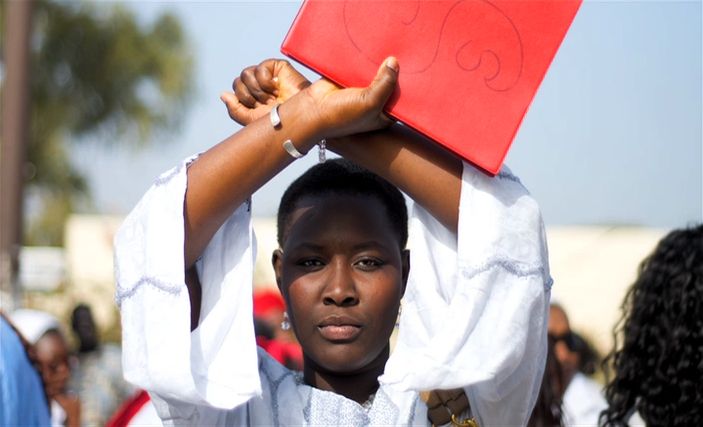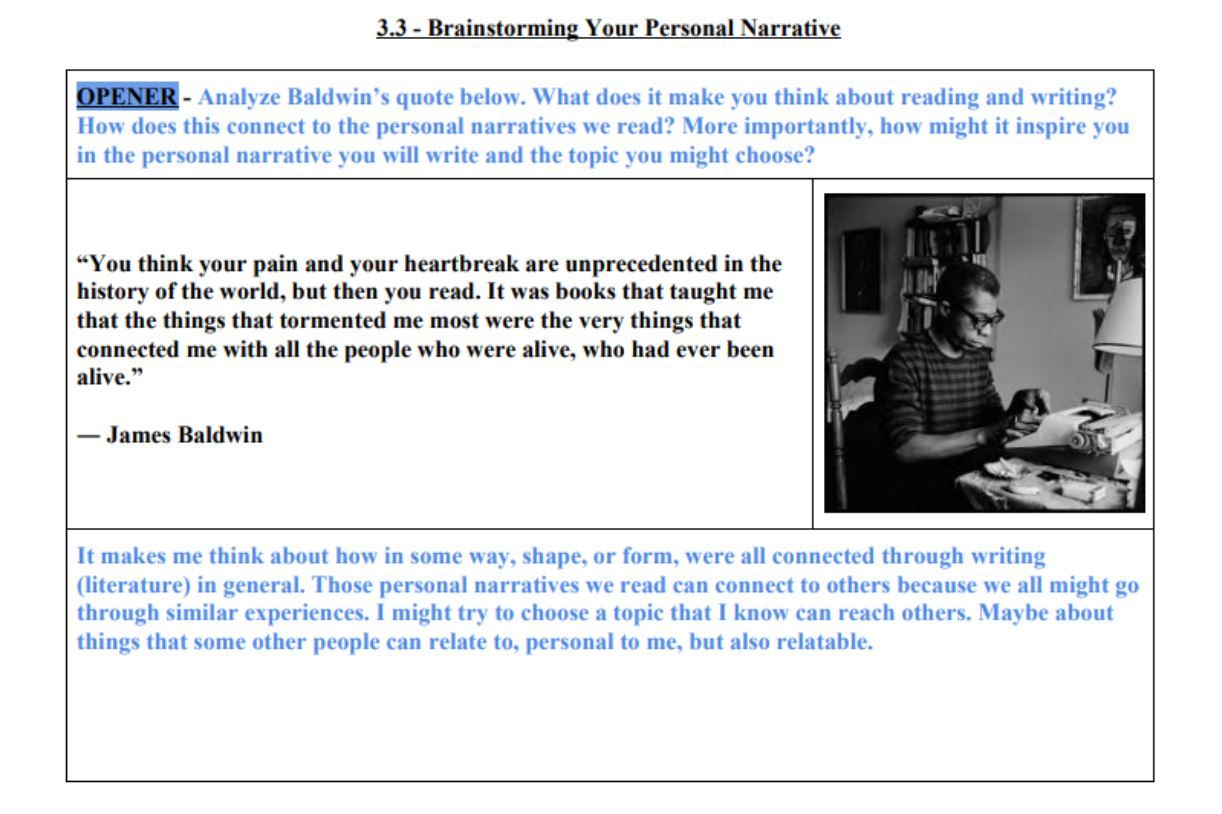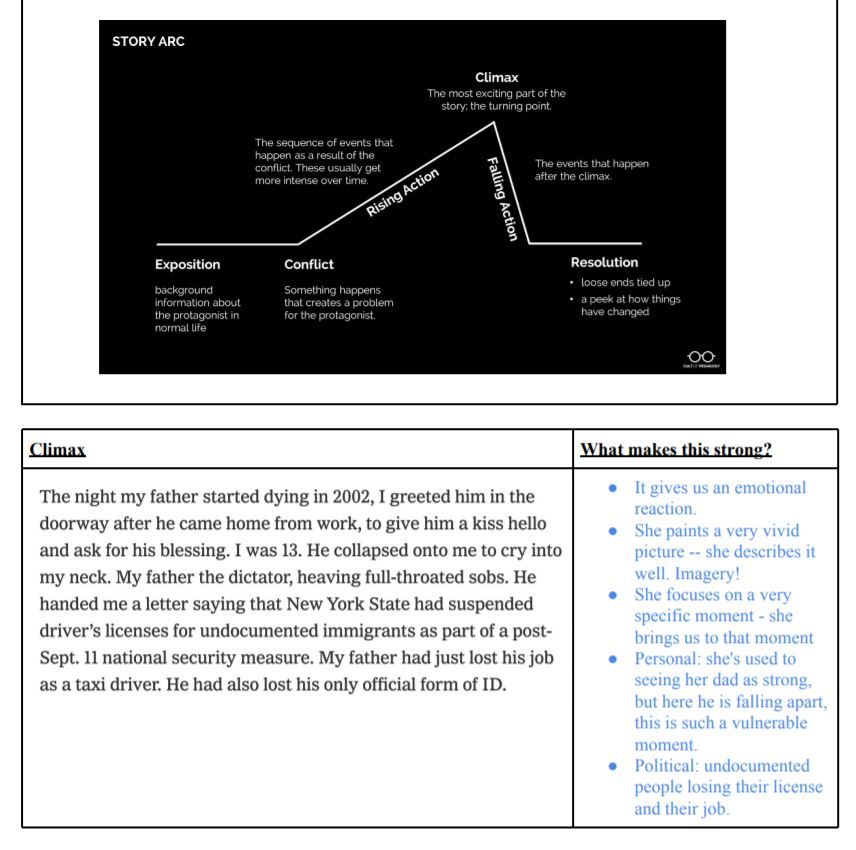This unit was created by Nataliya Braginsky, an ELA and Social Studies teacher at Metropolitan Business Academy in New Haven, Connecticut as part of the fall 2020 Pulitzer Center Teacher Fellowship program on Arts, Journalism, and Justice. It is designed for facilitation across five lessons.
For more units created by Pulitzer Center Fellows in this cohort, click here.
Objectives:
Students will be able to
- Read and analyze justice-oriented news stories from around the world, identifying themes and making connections to our personal lives.
- Write a first-person narrative about a meaningful life experience, making connections between the personal and political.
Unit Overview:
This unit designed for high school students puts personal narrative and journalistic writing in conversation with one another. It seeks to demonstrate the differences between these two modes of writing, while also uplifting the ways in which they inform each other. Ideal for Social Studies, English, or Journalism courses, in this unit students will first read a recently-published personal narrative of their choice connected to themes of racism, sexism, poverty, and struggles for justice. Next, students will read a related journalistic article published by the Pulitzer Center. Students will then compare and contrast the two forms of writing, considering both their processes and their purposes. This will form the foundation of the unit, which will then shift to students brainstorming the political topics that connect to their lives, which will become the focus of their personal narratives. Students will be given several strategies for choosing their topic, including exploring resources from the Pulitzer Center. The goal of the unit is for students to write personally, focusing on themselves, their families, and their communities, while recognizing that their personal stories are also political. Finally, while the unit outlines five lessons, this is the bare minimum, and it’s likely students may benefit from additional time to write, revise, and share their personal narratives.
The unit responds to the following essential questions:
- How are we as individuals/families/communities impacted by justice issues and struggles that are occurring on a national or international scale?
- What are the important personal stories we have to tell and how do they relate to larger themes of politics and justice? How do we tell our stories in compelling ways that foster connection for readers?
Resources for Facilitating this Unit:
Click here for a PDF outlining lesson plans for this unit, including warm-ups, discussion questions, activities, and a culminating performance task for the unit.
Click here for a Pulitzer Center Resources Chart, which lists reporting, essays, and short stories used in the lessons.
Click below for the daily unit worksheets and corresponding resources:
- Personal and Political
- Journalistic vs. Personal Writing
- Brainstorming Your Personal Narrative Topic
- First Half of Your Personal Narrative
- Second Half of Your Personal Narrative
View examples of student classwork throughout the unit below:
- Personal and Political - Student Opener Response
- Analyzing and Brainstorming Exposition
- Analyzing Climax, Falling Action, and Resolution
- Baldwin Quote - Student Opener Response 1
- Baldwin Quote - Student Opener Response 2
- Choosing Topic and Outlining
Performance Task:
Students craft personal narratives that have political resonance. The narrative can be a significant event in the student’s life or to someone in their community. Refer to Brainstorming your Personal Narrative to support students in the development process and download The New York Times Learning Network Student Personal Narrative Contest Rubric as an additional resource.
View examples of student writing from Metropolitan Business Academy below.
Additional Resources:
- "Do Not Accept Nan Check," Kiese Laymon
- “Why I Tried to Save My Father, My Dictator,” Karla Cornejo Villavicencio
- "Racism Is Terrible. Blackness Is Not,” Imani Perry
- “You Want a Confederate Monument? My Body Is a Confederate Monument,” Caroline Randall Williams
- “Why I Speak Up for Black Women,” Megan Thee Stallion
Students may need additional time to write their drafts, and it may be necessary to give students class time to write, rather than doing the writing for homework.
Giving students the opportunity to share their pieces and read their peers while they are in the midst of the writing process, can be helpful and a powerful way to create a writing community. If possible, give students an additional class period for peer revision.
Once students have finished writing, implementing teacher and peer feedback, and revising, create an opportunity for students to share part of all of their personal narratives with partners or in small groups, with the entire class, or more broadly with the larger school community!
Students are also encouraged to submit their personal narratives to the annual New York Times Learning Network Personal Narrative Writing Contest.
Common Core Standards
CCSS.ELA-LITERACY.W.11-12.3 - Write narratives to develop real or imagined experiences or events using effective technique, well-chosen details, and well-structured event sequences.
CCSS.ELA-LITERACY.W.11-12.9 - Draw evidence from literary or informational texts to support analysis, reflection, and research.





